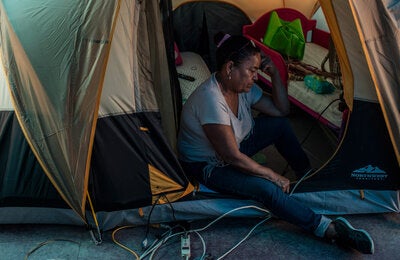World Malaria Report 2013 shows major progress in fight against malaria, calls for sustained financing
Geneva/Washington, D.C., 11 December 2013 (PAHO/WHO) — Efforts to control and eliminate malaria have saved an estimated 3.3 million lives since 2000, reducing malaria mortality rates by 45% globally and by 70% in the Americas, according to the World Malaria Report 2013, published by the World Health Organization (WHO).
Expanded prevention and control measures have contributed to consistent declines in malaria deaths and illnesses, despite an increase in the global population at risk of malaria between 2000 and 2012. Increased political commitment and expanded funding have helped to reduce the incidence of malaria by 29% globally and by 58% in the Americas.
In 2012, the Americas reported nearly 469,000 confirmed cases of malaria and 108 malaria deaths, down from over 1 million cases and some 390 deaths in 2000. Malaria incidence declined in 18 of 21 endemic countries of the region between 2000 and 2012. Seven countries are now in the pre-elimination phase. However, 145 million people in the Americas remain at risk of malaria, and 25 million of these are considered at high risk.
In both the Americas and globally, more work remains to be done.
"This remarkable progress is no cause for complacency: absolute numbers of malaria cases and deaths are not going down as fast as they could," says Dr. Margaret Chan, WHO Director-General. "The fact that so many people are infected and dying from mosquito bites is one of the greatest tragedies of the 21st century."
Funding gaps
In the Americas, countries with endemic malaria reported an estimated US$142 million in domestic malaria investments. This is proportionally among the highest levels of investment across WHO regions. However, the amount still falls short of the projected annual needs of some US$225 million for the Americas to protect its gains so far and to ensure further progress.
The Pan American Health Organization (PAHO) has been supporting efforts to fight malaria in member countries under a strategy and plan of action launched in 2011. The strategy aims to reduce malaria cases by a further 75% and malaria deaths by a further 25% by 2015. The strategy also seeks to advance toward elimination of malaria in areas where that is feasible (especially Mesoamerica and the Southern Cone), to reverse the trend in countries where malaria cases increased between 2000 and 2010, and to prevent the re-introduction of malaria in countries that have been declared malaria-free.
Notes for editors:
The World Malaria Report 2013 summarizes information received from 102 countries that had on-going malaria transmission during 2000-2012 as well as from other sources. The report updates analyses presented in 2012. The report contains revised estimates of the number of malaria cases and deaths, which integrate new and updated under-5 mortality estimates produced by the United Nations Inter-agency Group for Child Mortality Estimation, as well as new data from the Child Health Epidemiology Reference Group.



